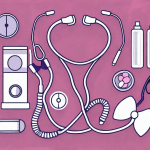This insightful article sheds light on the crucial aspect of breast cancer survival rates, emphasizing their importance in understanding the prognosis and treatment of the disease. Survival rates, typically measured over five years post-diagnosis, vary based on factors like cancer stage, age, and type. The article explains that while these rates offer a general pattern of survival, they don’t predict individual outcomes but serve as a guide, particularly as advancements in treatment continually improve these statistics. It discusses the impact of early detection, the role of genetics, and the variance in survival rates across different types of breast cancer. Additionally, the article highlights the positive influence of advanced treatments like targeted therapies and immunotherapies in improving survival rates. Importantly, it addresses the psychological aspect of coping with survival statistics, underscoring the importance of hope and positivity. This comprehensive guide is an invaluable resource for anyone affected by breast cancer, offering both information and encouragement for navigating this challenging journey.
Breast cancer is a topic that impacts many individuals and their loved ones. It is crucial to gain a comprehensive understanding of the breast cancer survival rate, as this knowledge aids in making informed decisions about treatment options and provides hope for those affected by the disease. In this article, we will delve into the key factors and statistics pertaining to breast cancer survival rates, highlighting the importance of these numbers in cancer prognosis.
Defining Breast Cancer Survival Rate
The breast cancer survival rate refers to the percentage of individuals who are still alive after a certain period of time following their diagnosis. It is typically measured in terms of the percentage of patients who survive for at least five years. Survival rates can vary depending on various factors, including the stage of cancer at diagnosis, the age of the patient, and the specific type of breast cancer.
The Importance of Survival Rates in Cancer Prognosis
Survival rates play a crucial role in assessing cancer prognosis, providing individuals and their healthcare teams with valuable information about the potential outcomes of the disease. Although survival rates cannot predict an individual’s specific outcome, they serve as a guide in understanding the general patterns of survival amongst those diagnosed with breast cancer.
It is essential to remember that survival rates are based on historical data and may not reflect advancements in treatment options, as well as individual variations in response to therapy. However, they serve as a starting point for discussions regarding treatment decisions, providing hope and support for patients and their families.
How Survival Rates are Calculated
Survival rates are calculated using data from large groups of people diagnosed with breast cancer. These rates are typically categorized by the stage of cancer at the time of diagnosis. The stage of breast cancer determines the extent to which the disease has spread within the body, and it plays a significant role in determining the prognosis.
Survival rates are calculated by examining the percentage of people who are still alive after a certain period of time following their diagnosis. These rates are often conveyed as a five-year survival rate, which provides insights into the likelihood of surviving breast cancer for at least five years post-diagnosis.
Key Factors Influencing Breast Cancer Survival Rates
Several key factors influence breast cancer survival rates. Understanding these factors can help individuals and healthcare professionals make informed decisions regarding treatment options and support measures. Let’s explore two significant factors: age and breast cancer stages.
Age and Breast Cancer Survival
Age plays a significant role in breast cancer survival rates. Younger women generally have higher survival rates compared to older women. This may be attributed to various factors, including the physiological differences in how cancer progresses and the impact of comorbidities among older individuals. However, it is crucial to note that advancements in treatment modalities have progressively improved survival rates for women of all ages.
Breast Cancer Stages and Survival Rates
The stage at which breast cancer is diagnosed significantly impacts survival rates. The stage of cancer is determined by factors such as tumor size, lymph node involvement, and distant metastasis. It is essential to detect breast cancer at an early stage to enhance the chances of successful treatment and a better prognosis.
The five-year survival rate for localized breast cancer, where cancer is confined to the breast and nearby lymph nodes, is higher compared to cases where cancer has spread to distant organs. However, even for cases in advanced stages, advancements in treatment options have improved overall survival rates in recent years.
The Role of Genetics in Breast Cancer Survival
In addition to age and cancer stage, genetic factors also influence breast cancer survival rates. Certain gene mutations, such as the BRCA1 and BRCA2 genes, are associated with a higher risk of developing breast cancer and can impact treatment outcomes. Genetic testing and counseling can help individuals understand their genetic predisposition and make informed decisions regarding treatment and preventive measures.
Current Statistics on Breast Cancer Survival Rates
Understanding the current statistics on breast cancer survival rates provides insight into the progress made in the fight against this disease and offers hope to individuals facing a breast cancer diagnosis.
Global Statistics on Breast Cancer Survival
The survival rates for breast cancer can vary across different countries and regions due to various factors such as access to healthcare and differences in screening programs. Globally, the five-year survival rate for breast cancer is around 90%. This statistic demonstrates the positive impact of early detection and advancements in treatment options.
Survival Rates Based on Breast Cancer Types
Survival rates can also vary based on the different types of breast cancer. For example, the five-year survival rate for early-stage breast cancer, such as ductal carcinoma in situ (DCIS), is close to 100%. On the other hand, survival rates for certain aggressive subtypes, such as triple-negative breast cancer, may be lower but continue to improve with advancements in targeted therapies.
Improving Survival Rates: Advances in Breast Cancer Treatment
Advancements in breast cancer treatment have had a significant impact on improving survival rates. Medical research and innovation have led to the development of targeted therapies and personalized treatment approaches, which have revolutionized breast cancer management.
The Impact of Early Detection on Survival Rates
Early detection plays a crucial role in improving breast cancer survival rates. Regular breast self-examinations, mammograms, and clinical examinations can help identify breast cancer at an early stage when treatment is most effective. Awareness campaigns and routine screenings have positively influenced survival rates by facilitating the diagnosis of breast cancer at an early and more treatable stage.
The Role of Innovative Treatments in Increasing Survival Rates
In recent years, there have been tremendous advancements in breast cancer treatment. Targeted therapies and immunotherapies have emerged as promising treatment options, offering improved outcomes and survival rates for individuals with specific types of breast cancer. These innovative treatments work by targeting specific molecular characteristics of cancer cells, thus increasing treatment efficacy and reducing side effects.
Additionally, ongoing research continues to uncover new treatment modalities and approaches to tackle breast cancer, further improving survival rates and the quality of life for those affected by the disease.
The Psychological Impact of Survival Rates on Patients
While survival rates provide valuable information for patients and healthcare professionals, it is important to acknowledge the psychological impact they can have on individuals facing a breast cancer diagnosis. Coping strategies and maintaining a positive outlook play a crucial role in navigating through the emotional challenges associated with cancer.
Coping with Survival Rate Statistics
Upon receiving a breast cancer diagnosis, it is natural for individuals to feel overwhelmed by survival rate statistics. However, it is important to remember that these statistics are based on population averages and may not reflect an individual’s unique circumstances, including genetic makeup, treatment plan, and response to therapy. Individuals are encouraged to work closely with their healthcare team and seek support from cancer support groups or counseling to navigate through these emotions.
The Importance of Hope and Positivity in Cancer Survival
Throughout the breast cancer journey, maintaining hope and a positive mindset is essential. Numerous individuals have defied survival rate statistics and thrived despite the odds. Surrounding oneself with a supportive network, focusing on self-care, and staying informed about the latest treatment advancements can contribute to a sense of empowerment and positivity.
Ultimately, survival rates provide a framework for understanding breast cancer outcomes, but individual experiences can vary tremendously. Each person’s journey is unique, and with the ongoing advancements and supportive care available, there is reason to remain optimistic.
Conclusion
Understanding the breast cancer survival rate is a crucial aspect of the journey for individuals diagnosed with breast cancer. It provides insights into prognosis, helps guide treatment decisions, and offers hope. It is important to remember that survival rates are not definitive predictions but serve as a starting point for discussions and decision-making.
Advancements in breast cancer treatment, early detection strategies, and ongoing research continue to improve survival rates and offer new possibilities for individuals facing this disease. Equipped with knowledge, support, and a positive mindset, individuals can navigate the breast cancer journey with confidence and resilience.






